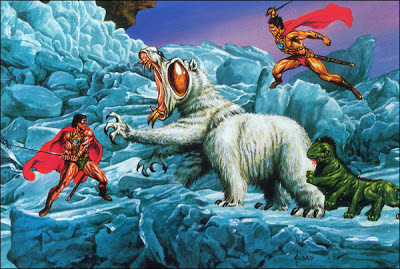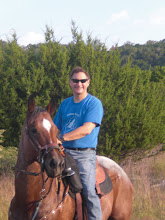ALCHEMY is the skill of making
potions, elixirs, oils or balms that have wondrous or magical effects that
duplicate spells. It is a routine (DC
10) alchemy check to identify the nature or contents of a bottle or flask
as most potions are labeled in Barsoomian hieroglyphs. Common examples and purchase price of potions
are listed in parenthesis in the table.
In
order to concoct a potion, a character needs the necessary material components
and access to a proper (1000-4000gc) laboratory. The GM will tell the PC how much time is
required for manufacturing a potion, elixir or balm as well as availability and
cost of components. In general, DC
is based on the power of product desired.
12 for
1st level (cure
light wounds, remove fear; 50gc),
15 for 2nd level (haste, spiritual weapon; 100gc),
18 for 3rd level (cure disease, water breathing; 250gc),
21 for 4th level (negate poison, remove curse, 500gc).
“None of us had come through the conflict
unscathed, but the marvelous, healing salves of Barsoom had sufficed, overnight
to make us good as new.” (WM VI)
APPRAISE skill is used to estimate
the quality, craftsmanship and value of gemstones, jewelry, artwork, furniture
and ornamental items that are ‘liberated.’
If the appraising character is
using a magnifying glass (3gc, ½#), he gains +2 circumstance bonus on the die roll.
It takes a DC 10 appraise skill throw to ascertain the value of prized
ores or weapons. It takes a DC 12
appraise skill to estimate the value of gems.
It takes a DC 14 appraise
skill to estimate the value of utensils or jewelry. It takes a DC 16 appraise skill to estimate
the value of paintings, artwork or antique furniture.
When determining the success of appraise skill throws, the GM (not
the player) rolls the die. A successful check means the
character correctly estimated the item’s value.
If the character failed his appraise skill throw, the GM informs him
that he is stumped (if exotic or rare item) and covertly
rolls d20 then multiplies by 10% of item’s true value and gives the PC that
‘estimate.’
A DC 10 appraise skill will recognize a gadget but will NOT identify the nature and
power of the technology or magic. Mere
appraisal of certain items (swords, shields, rings) as magical or special is
sufficient in many circumstances to allow usage, as these items often require
no special procedure or command words to activate or deploy. Any fool can wield
many enchanted weapons, just pick up and attack; however, the PC/ NPC must appreciate
the item as a valuable item before he sets aside his familiar mundane weapons,
tools or implements.
Beastmaster skill is used in the
capturing, training, handling, feeding and breeding of the various domesticated
and wild animals found upon the Red Planet. This skill does not allow the
character to parley or converse with wild or feral beasts.
“In the course of a few days my thoats were the wonder
of the entire community. They would follow me like dogs, rubbing their great
snouts against my body in awkward evidence of affection, and respond to my
every command with an alacrity and docility which caused the Martian warriors
to ascribe to me the possession of some earthly power unknown on Mars.” (PM XIII)
The time required (3- 8 weeks)
to train an animal depends on the intelligence and disposition of the
beast. Obviously, herbivores are easier
to train than predators (+4 DC) and
insects are to be avoided! Animals that
have been befriended can be trained for a specific task or role:
9
for pulling
or hunting,
12 for carrying
or riding,
15 for tracking
or fighting,
18 for guarding
or performing.
“While
panthans are well paid, they are also great gamblers and notorious spenders,
with the result that they are almost always without funds and often reduced to
strange expedients for the gaining of livelihood between engagements; a fact
which gives plausibility to our possession of a trained ape.” (MM IX)
Trained animals or beasts may execute some tricks (DC 12); such as
‘post’, ‘fetch’, ‘down’, ‘heel’, ‘sak’ or ‘attack’; however, DC is increased by one for each point of damage that
the animal has received.
“My experience with Woola determined me to
attempt the experiment of kindness in my treatment of my thoats. First I taught
them that they could not unseat me, and even rapped them sharply between the
ears to impress upon them my authority and mastery. Then, by degrees, I won
their confidence in much the same manner as I had adopted countless times with
my many mundane mounts. I was ever a good hand with animals, and by
inclination, as well as because it brought more lasting and satisfactory
results, I was always kind and humane in my dealings with the lower orders. I
could take a human life, if necessary, with far less compunction than that of a
poor, unreasoning, irresponsible brute.” (PM XIII)
CLIMB skill is used to traverse
vertical or rough surfaces. Climbing
characters move at slow pace; however, possession of a climber’s kit (50gp, 5#) grants a +2 circumstance
bonus.
With a successful climb
check, you may ascend, descend or move sideways 1d6” per action (p.26). A tie result implies the
climber has dropped something, but has successfully moved. If character rolls a
natural ‘1’, or fails a climb skill check by 10 or more, he falls (damage from falling is dN per ad fallen, where N is
the character’s size score, p.3)
DC Example
9 elaborate building or ship’s rigging
12
ruins, mountain, beanstalk, tree
15
wall of dungeon or fortress
20
brick wall or inclined cliff
25 polished or smooth surface
+5 if
surface is wet or slimy
“Martians are
at best but poor climbers. Upon the
entire surface of that ancient planet I never before seen a hill or mountain
that exceeded four thousand feet in height above the dead sea bottoms, and as
the ascent was usually gradual, nearly to their summits they presented but few
opportunities for the practice of climbing.
Nor would the Martians embraced the opportunities as might present
themselves, for they could always find a circuitous root about the base of any
eminence, and these roads they preferred and followed in preference to the
shorter but more arduous ways.” (GM II)
CRAFT skill represents a
variety of vocations or trades such (d12) as
blacksmith, bowyer, carpenter, farmer, mason, miner, merchant, potter,
shepherd, tailor, teamster, or vitner.
Craft skill is specific for the chosen occupation or trade. There is usually no cross relevance; i.e, skill
as a wood worker (carpenter)
does not apply to traveling in wagons (teamster).
Craft skill is often used in game situations where
characters would like to repair or construct something. The assigned DC is based upon the tools at
hand and the scale of the desired project.
A laborer earns 1sc a day for his toil, while a character with craft
skill earns 2-4 sc per 4 zode work day.
Black
pirates may substitute cross-train if
they happen to acquire the Craft skill as “it is
criminal for a First Born to labour or invent.” (GM XIII).
Artwork from
Thomas Yeates



















.jpg)






















